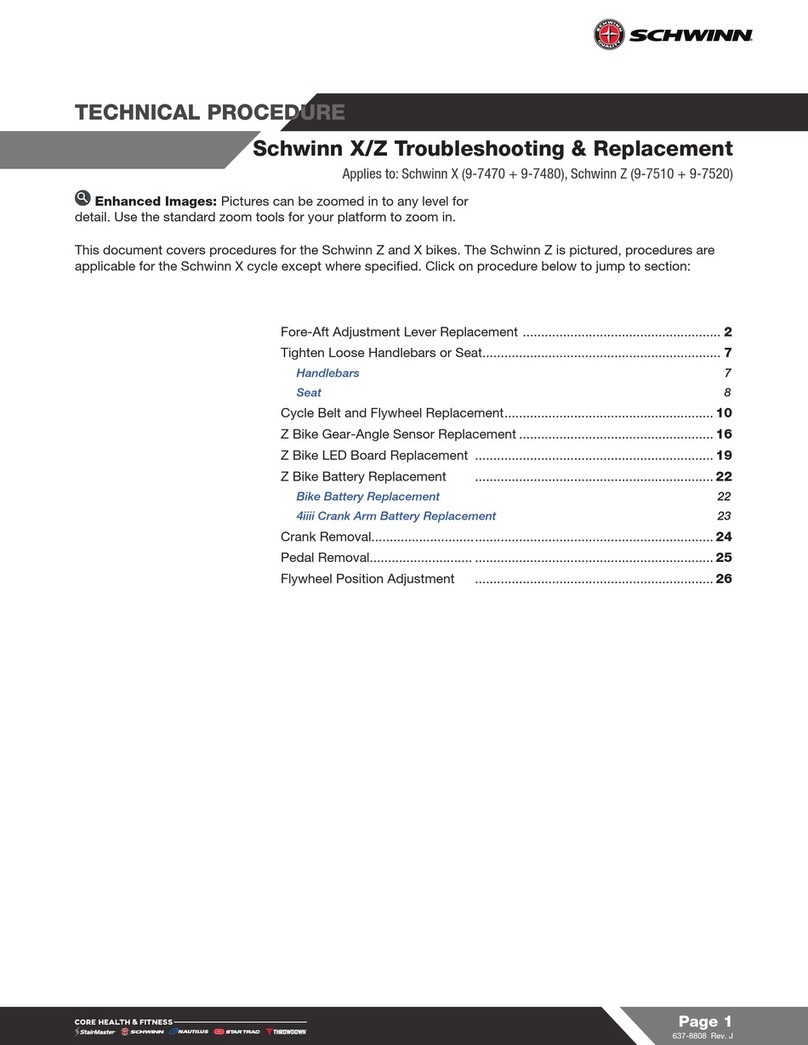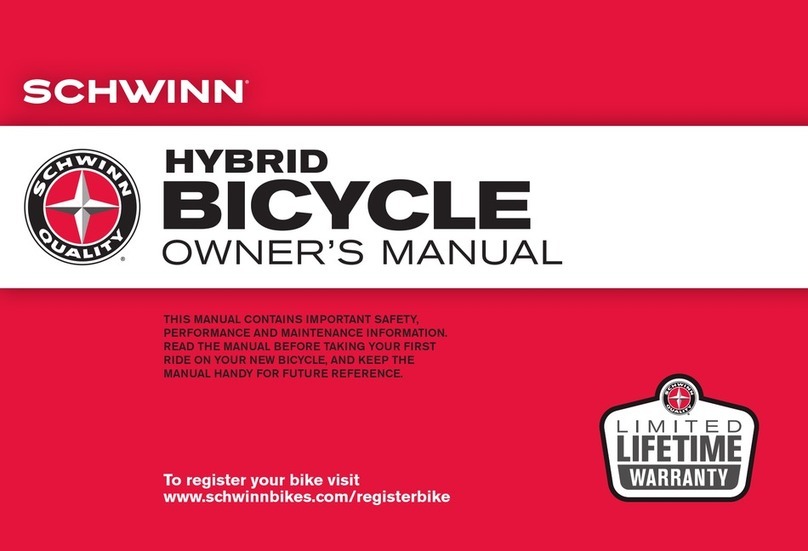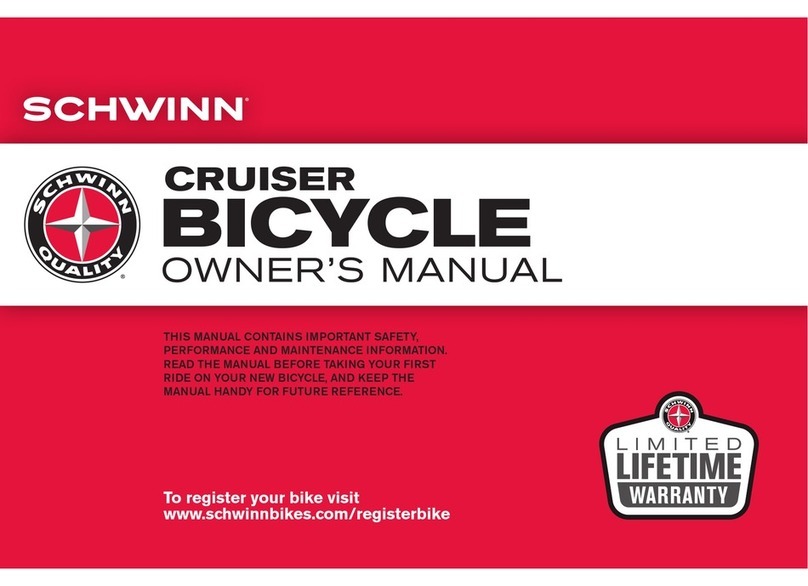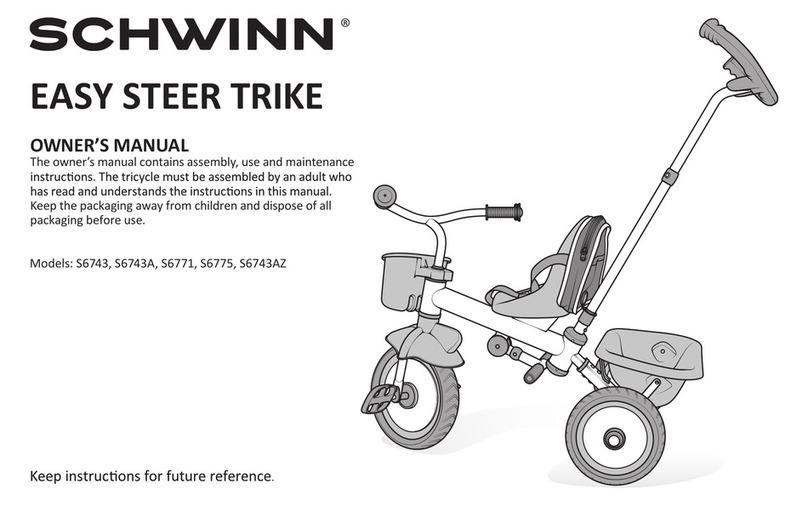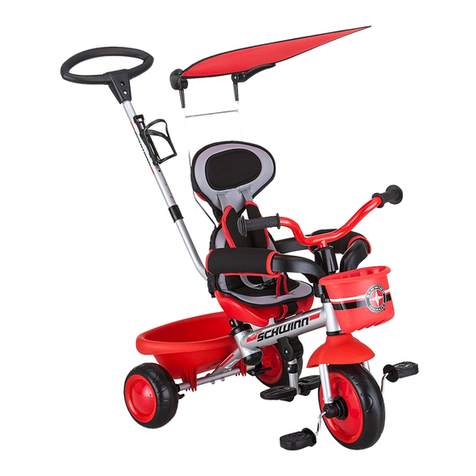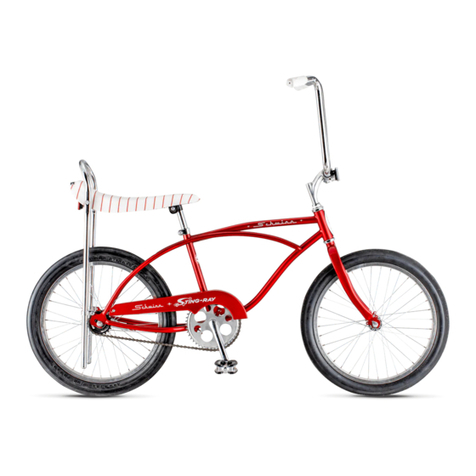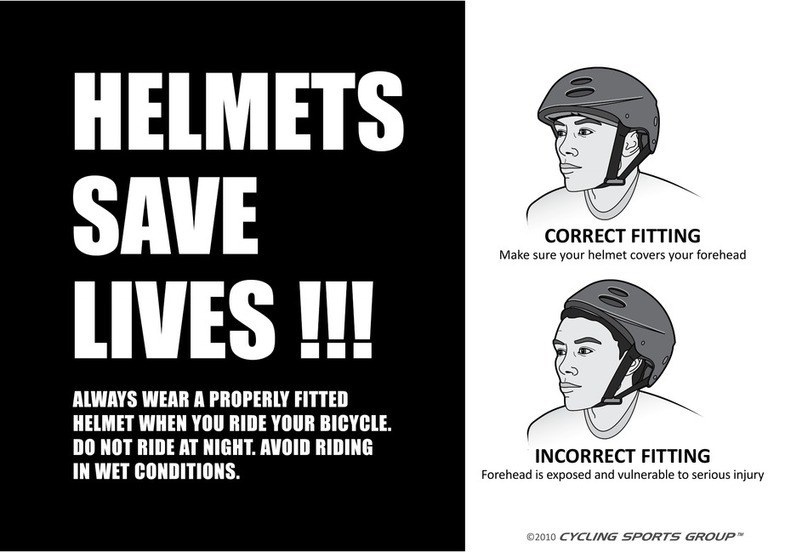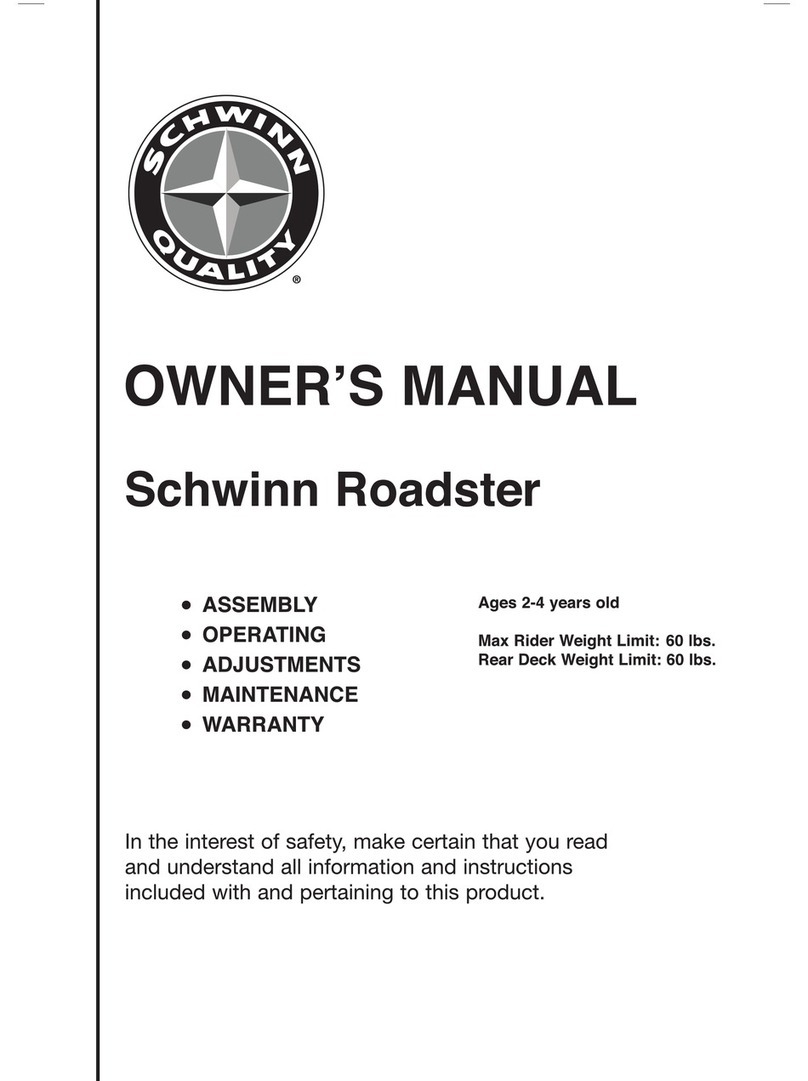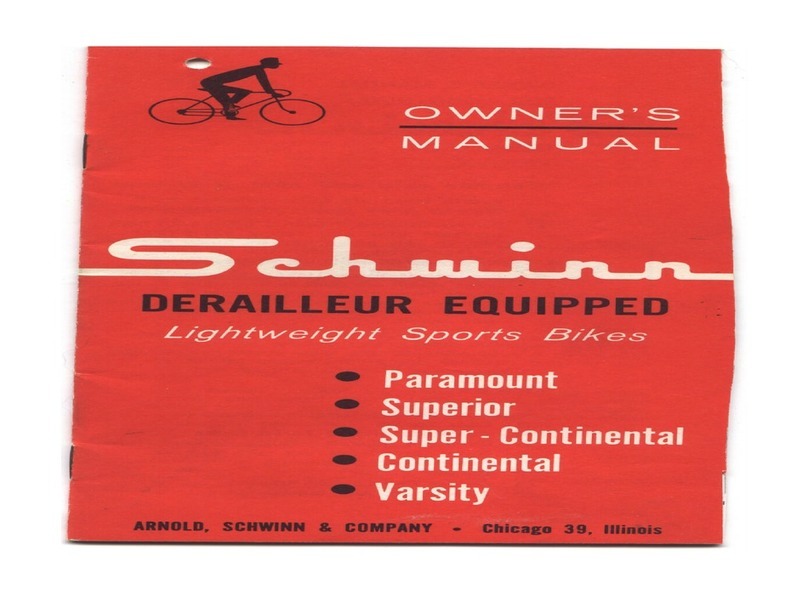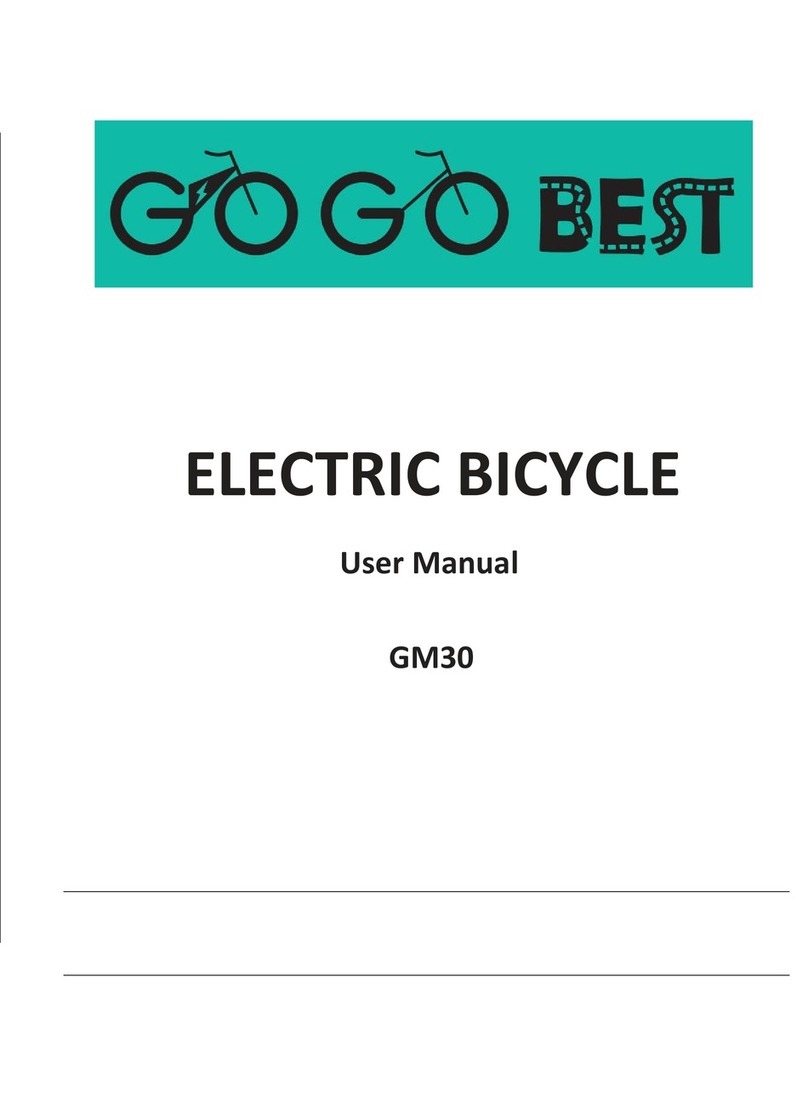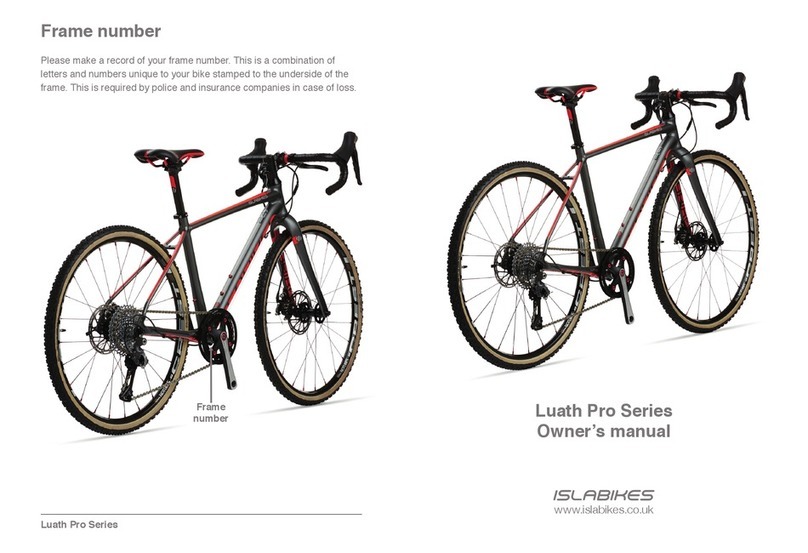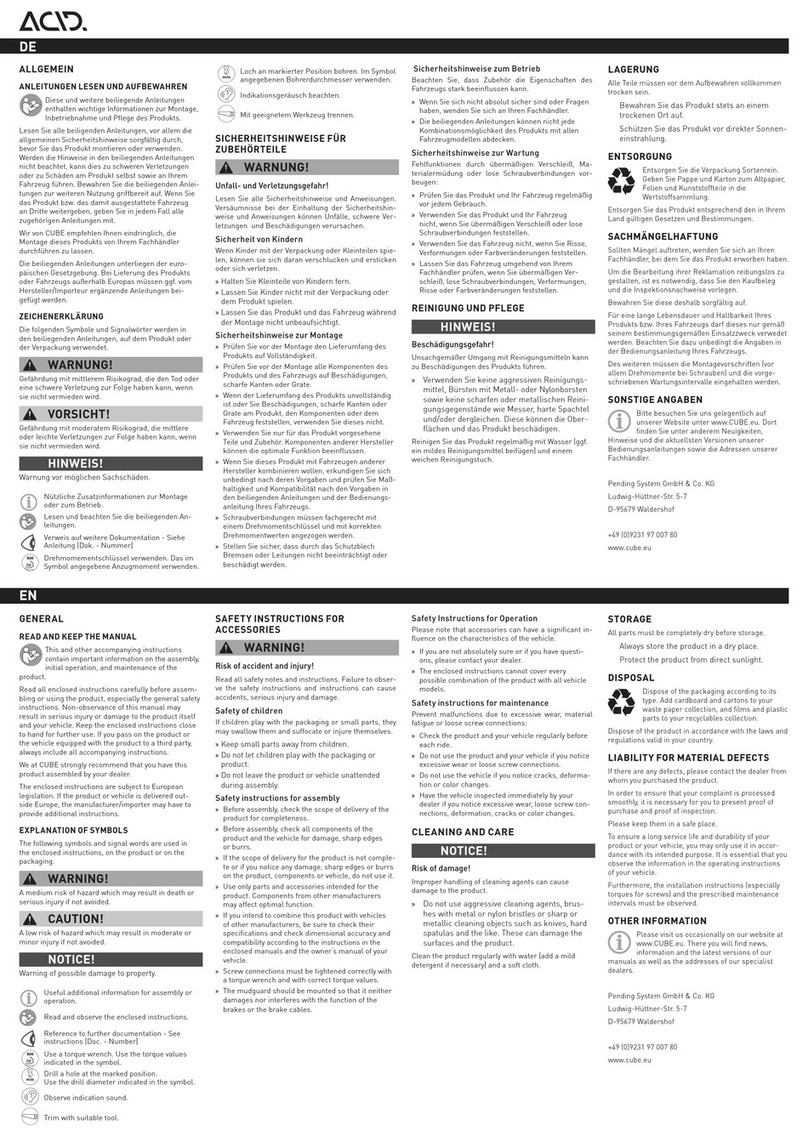
2
Congratulaons
onyournewbicycle!Properassemblyandoperaonofyour
bicycleisimportantforyoursafetyandenjoyment.Our
customerservicedepartmentisdedicatedtoyoursasfacon
withPacicCycleanditsproducts.Ifyouhavequesonsorneed
adviceregardingassembly,parts,performance,orreturns,
pleasecontacttheexpertsatPacicCycle.Enjoy the ride!
Toll free: 1-800-626-2811.
Customer Service hours:Monday-Friday8AM-5PMCentral
StandardTime(CST)
Youmayalsoreachusat:
Web:www.pacic-cycle.com
Email:customerservice@pacic-cycle.com
Mail: P. O. Box 344
4730 E. Radio Tower Lane
Olney,IL62450
Do not return this item to the store. Please call Pacic Cycle
customer service if you need assistance. You will need your
modelnumberanddatecodelocatedontheservicesckernear
theboombracketarea.SeeSecon 7: Purchase Record for the
locaonofthemodelnumberonyourbicycle.
About This Manual
Itisimportantforyoutounderstandyournewbicycle.
Byreadingthismanualbeforeyougooutonyourrstride,you’ll
knowhowtogetbeerperformance,comfort,andenjoyment
fromyournewbicycle.Itisalsoimportantthatyourrstrideon
yournewbicycleistakeninacontrolledenvironment,awayfrom
cars,obstaclesandothercyclists.
Thismanualcontainsimportantinformaonregardingsafety,
assembly,use,andmaintenanceofthebicyclebutisnot
intendedtobeacompleteorcomprehensivemanualcoveringall
aspectsconcerningbicycleownership.Werecommend
consulngabicyclespecialistifyouhaveanydoubtsorconcerns
regardingyourexperienceorabilitytoproperlyassembleand
maintainthebicycle.
A Special Note For Parents and Guardians
Itisatragicfactthatmostbicycleaccidentsinvolvechildren.
Asaparentorguardian,youbeartheresponsibilityforthe
acviesandsafetyofyourminorchild.Amongthese
responsibiliesaretomakesurethatthebicyclewhichyour
childisridingisproperlyedtothechild;thatitisingood
repairandsafeoperangcondion;thatyouandyourchild
havelearned,understandandobeynotonlytheapplicablelocal
motorvehicle,bicycle,andtraclaws,butalsothecommon
senserulesofsafeandresponsiblebicycling.Asaparent,you
shouldreadthismanualbeforelengyourchildridethe
bicycle.Pleasemakesurethatyourchildalwayswearsan
approvedbicyclehelmetwhenriding.
